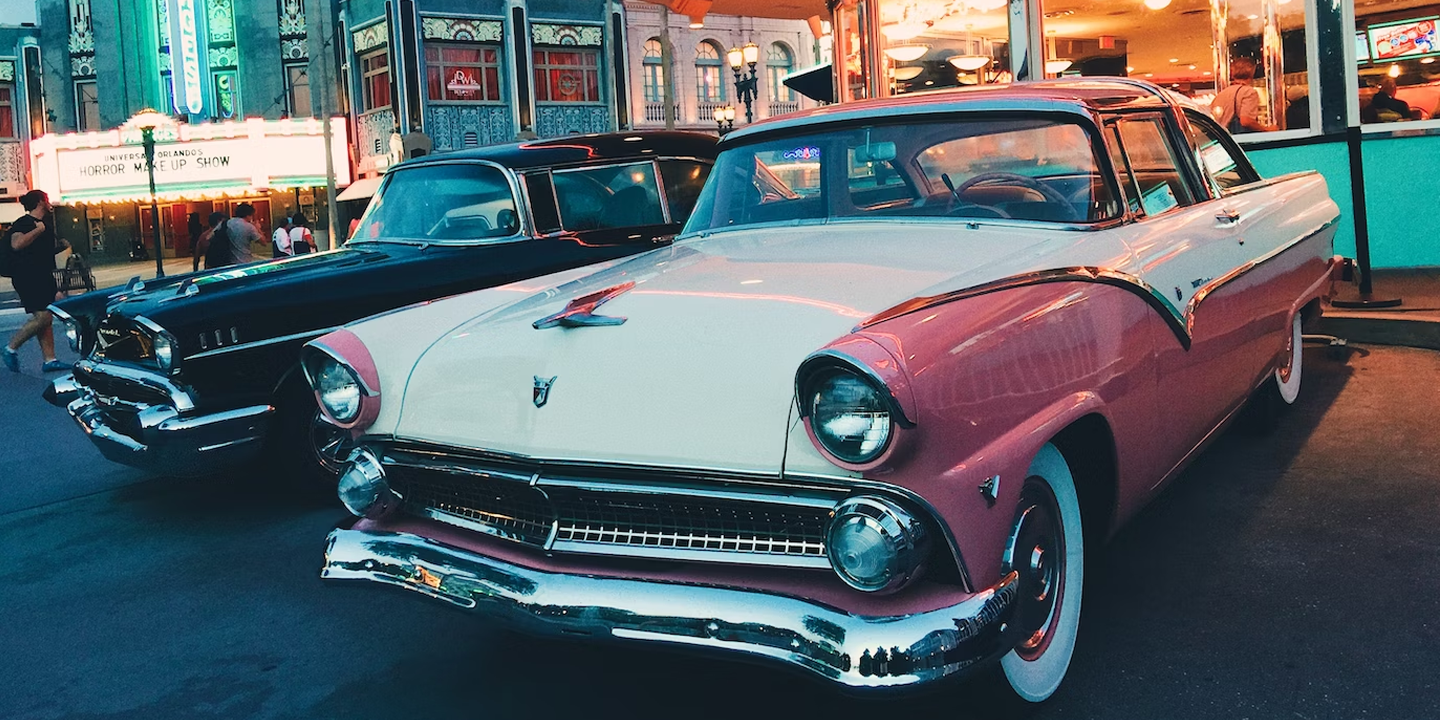Two Racing Worlds Collide Here
For motorsport fans, Sunday afternoons ignite a global passion but in strikingly different ways. In the U.S., oval showdowns take over living rooms for hours, while in Europe, the day often begins with high-tech drama through street chains. Besides their clear differences, both motorsport brands also share interesting similarities, and we cover both ahead. Let’s begin with what sets them apart from each other.
1. NASCAR Uses Oval Tracks While F1 Uses Circuits
NASCAR's oval philosophy dates back to 1948 when Bill France Sr. wanted predictable racing surfaces. Meanwhile, F1 circuits wind through Monaco's streets and Silverstone's countryside. This departure from NASCAR’s predictability demands completely different driving skills.
2. F1 Engines Are More Powerful Than NASCAR
Current F1 hybrid power units generate around 1000 horsepower through turbo V6 engines plus electric motors. NASCAR's naturally aspirated V8 engines produce 670 horsepower after restrictor plates were mandated. Raw power doesn't always mean better racing, though.
3. NASCAR Season Has More Race Events
The NASCAR Cup Series runs 36 races from February through November and keeps fans glued to screens almost every weekend. With 23 races, F1 travels worldwide, and each Grand Prix weekend becomes a major international event.
4. NASCAR Allows Car Contact, But F1 Forbids It
Bumping and grinding separate these sports dramatically. NASCAR drivers regularly use "chrome horn" tactics, bumping opponents out of the way during intense battles. Viewing racing as a precision sport where touching usually means someone messed up, F1 officials penalize almost any contact.
5. NASCAR Races Run Longer Than F1
While NASCAR races stretch 3 to 4 hours, they come with caution periods and strategy breaks. F1 Grand Prix events finish within two hours maximum and maintain an intense pace throughout. Different audiences expect different entertainment values completely.
 Paula R. Lively from Zanesville on Wikimedia
Paula R. Lively from Zanesville on Wikimedia
6. NASCAR Uses Sequential Gears While F1 Uses Paddle Shifts
During gear changes, NASCAR drivers work sequential manual gearboxes without using clutches. Meanwhile, F1 racers flip paddle shifters behind their steering wheels with eight gears available. Both require skill, just different techniques entirely.
 The SECRET To NASCAR’s 5 Gear Transmissions by Upclose Racing
The SECRET To NASCAR’s 5 Gear Transmissions by Upclose Racing
7. F1 Budget Is Higher Than NASCAR Costs
Top F1 teams spend around $400 million annually despite recent budget caps trying to control costs. NASCAR Cup teams operate on roughly $15-20 million budgets, making competition more accessible for smaller organizations and independent owners.
 Press Service of the President of the Republic of Azerbaijan on Wikimedia
Press Service of the President of the Republic of Azerbaijan on Wikimedia
8. NASCAR Usually Uses One Tire, While F1 Uses Multiple
NASCAR mostly runs one tire compound but sometimes brings grippier option tires for extra strategy. Every weekend, F1 provides three different tire types. Teams must pick between speed and how long their tires last during races.
 Chris from Surrey, British Columbia, Canada on Wikimedia
Chris from Surrey, British Columbia, Canada on Wikimedia
9. NASCAR Allows Refueling While F1 Does Not
Fuel strategy separates old from new-school racing. At NASCAR, pit crews still pump gas during fast pit stops, which adds another variable to race strategy. However, F1 banned refueling in 2010 for safety reasons; hence, teams manage fuel loads.
 United States National Guard on Wikimedia
United States National Guard on Wikimedia
10. NASCAR Runs Clockwise While F1 Runs Both Directions
Track direction matters more than people think. F1 tracks go clockwise or counterclockwise, and it depends on how each circuit is designed. But NASCAR always goes clockwise around oval tracks, putting drivers' left sides closest to the concrete walls.
Differences aside, something interesting happens when you dig deeper. These seemingly opposite racing formats share many similarities. Here they are.
1. Both Feature Professional Racing Driver Athletes
Top racing talent doesn't care about series boundaries. Drivers like Hamilton and Larson show amazing reflexes and smart thinking under crazy pressure. These world-class athletes earn millions while risking their lives at 200+ mph every weekend.
 Zach Catanzareti Photo on Wikimedia
Zach Catanzareti Photo on Wikimedia
2. Global Television Broadcasts Reach Worldwide Audiences
Television networks pay billions for racing rights across continents. F1 reaches 1.9 billion viewers globally, while NASCAR draws millions in the U.S. Sky Sports, NBC, and ESPN turn race day action into must-watch TV, proving speed fascinates audiences everywhere.
3. Both Use Points-Based Championship Systems
NASCAR awards 40 points for wins plus bonus points for stage victories. On the other hand, F1 gives 25 points to race winners, with points decreasing down to tenth place. Every point matters during the championship, carefully calculated by scoring systems.
 Unknown authorUnknown author on Wikimedia
Unknown authorUnknown author on Wikimedia
4. Pit Crews Perform Fast Tire Changes
With single-nut wheels and air tools, F1 mechanics execute 2.3-second stops. Using five-lug nuts and air guns, NASCAR crews change four tires in 12 seconds. Speed matters a lot, regardless of the equipment used.
 U.S. Navy photo by Chief Photographer's Mate Johnny Bivera on Wikimedia
U.S. Navy photo by Chief Photographer's Mate Johnny Bivera on Wikimedia
5. Cars Reach Speeds Over 200 MPH
Velocity creates universal thrills regardless of the racing format. NASCAR stock cars hit 200 mph at Talladega and Daytona superspeedways during pack racing battles. F1 machines exceed 230 mph at Monza's long straights, entertaining fans everywhere.
6. Teams Use Advanced Telemetry Data Systems
Information warfare happens during every racing session. Engineers monitor hundreds of data points, including tire temperatures, fuel consumption, and aerodynamic efficiency. Millions of dollars worth of sensors and computers turn racing into high-tech battles fought with algorithms.
7. Engineers Use Wind Tunnels For Testing
Aerodynamic research gives competitive advantages in both championships. Teams test scale models for hours in wind tunnels and look for any tiny improvements in airflow. Every aerodynamic gain means lap time improvements and victories.
 NASCAR 101: Analyzing a Cup Series test inside a rolling-road wind tunnel by NASCAR
NASCAR 101: Analyzing a Cup Series test inside a rolling-road wind tunnel by NASCAR
8. Drivers Require Intense Physical Fitness Training
Racing pushes human limits with extreme heat, G-forces, and mental pressure, lasting hours. Professional drivers follow strict fitness routines and diets just like any other elite athlete competing at the highest level.
 U.S. Navy photo by Megan Kohr on Wikimedia
U.S. Navy photo by Megan Kohr on Wikimedia
9. Weather Conditions Affect Both Racing Strategies
Rain changes everything in motorsport competition. Wet conditions force F1 teams into complex tire strategies and careful driving approaches. NASCAR postpones races during storms, but heat and humidity still mess with engine performance throughout every single racing weekend.
 Daniel Herrick LBIPP on Wikimedia
Daniel Herrick LBIPP on Wikimedia
10. Safety Technology Advances Benefit Both Sports
Innovation saves lives across all forms of motorsport competition. HANS devices, carbon fiber safety cells, and advanced helmet technology protect drivers universally. Racing pushes safety boundaries that later help make regular cars safer for everyday drivers on public roads.

















